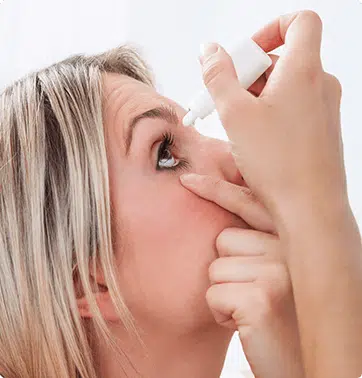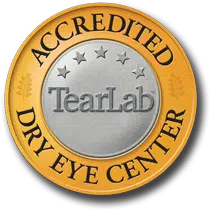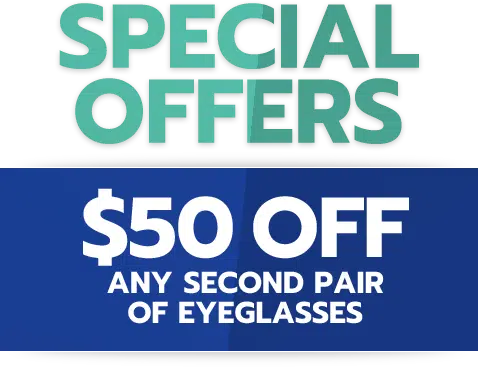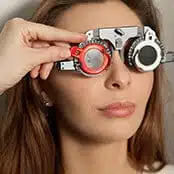Corneal Disorders
Dedicated Eye Care
The cornea is the outermost layer of your eye. It is a clear dome that helps protect the eye from germs, dust, and other harmful particles. Light rays first enter your eye through the cornea, the “window” of your eye. The cornea and lens in your eye work together to help your eye focus.
At Advanced Sight Center, our ophthalmologists treat corneal disorders and injuries. Common problems with the cornea include:
Dry eye is a common condition that can occur if you do not produce enough tears or if your tears are not normal. Symptoms may include itching, burning, stinging, or excess tearing. Dry eye can result from blocked tear ducts, eye infections, and some medications. Environmental factors such as sun exposure, smoke, wind, dry air, or indoor air conditioning can also contribute to dry eye. In addition, the risk of dry eye increases with age.
Over-the-counter or prescription artificial tears may be used to add moisture to your eyes. In some cases, our eye doctors may recommend blocking your tear ducts using punctal plugs. Our ophthalmologists will diagnose the cause of your dry eye and recommend treatments to relieve your symptoms. To treat your dry eye symptoms, we offer Oasis Tears as well as EyePromise EZTears vitamins at a special offer. If you suffer from Dry Eye, our Dry Eye Center is here to help.
Approximately half of those with general allergies will experience eye allergies, which cause itchy, red, burning, and watery eyes. Allergens such as pollen, dust mites, pet dander, mold, air pollution, cosmetics, soaps, foods, and even eye drops can trigger eye allergies. Our eye doctors will examine your eyes and recommend prescription medications to relieve your allergy symptoms.
There are two potential injuries that can happen to the cornea: a corneal abrasion and corneal ulcer. Corneal abrasions are potential injuries, and occur when the cornea is scratched or injured by substances such as dirt, sand, or chemicals. A corneal ulcer, is an open sore on the cornea. It is usually cause by infection or severe dry eye. Contact lenses or ultraviolet light may also damage the cornea. Puncture injuries may result from trauma. Particles moving at a high speed or very sharp objects can penetrate the cornea.
Symptoms of a corneal abrasion or ulcer may include eye pain, redness, the feeling that something is in your eye, excessive tearing, blurred vision, or sensitivity to light.
If you have a corneal abrasion or ulcer, you should seek treatment immediately. Superficial corneal injuries heal quickly with treatment. Extremely severe cases may require surgery or a cornea transplant.
Keratoconus is one of over 20 corneal dystrophies that causes the cornea to become cloudy and decrease vision. This condition causes the normally dome-shaped cornea to bulge outward into a cone shape, which leads to blurred vision.
Keratoconus typically affects both eyes and develops during the teenage years. In the early stages, it can be managed with eyeglasses or soft contact lenses. But as the disease progresses, you will need specially fitted contact lenses to prevent further damage to the cornea, reduce the distortion, and improve vision.
There are various types of lenses to treat keratoconus, including custom soft contact lenses, gas permeable lenses, "piggybacking" lenses, hybrid lenses, or scleral and semi-scleral lenses. For your convenience, our doctors can fit you with these specialty lenses in the comfort of our office.
Those who cannot tolerate contact lenses or who have advanced keratoconus may benefit from a cornea transplant or advanced treatments, such as high radio energy to reshape the cornea, which may help prevent the need for a corneal transplant.
Corneal dystrophy is a genetic eye condition that is rare, as the cornea in the eye loses its normal clear vision, and becomes cloudy. Corneal dystrophy refers to a variety of corneal diseases. When someone may have corneal dystrophy, symptoms are not always present, and the severity of the condition depends on the type of dystrophy and your age. Having corneal dystrophy can affect the ability for the eye to let light in, which can impair your vision, and possibly causing blindness. The types of corneal dystrophy includes:
- Anterior Basement Membrane (or Map-Dot-Fingerprint) Dystrophy
- Lattice dystrophy
- Fuchs’ (or Endothelial) Dystrophy
Comprehensive Dry Eye Relief in Washington, MO
Don’t trust your eye care to anyone other than Advanced Sight Center. Our board-certified ophthalmologists serve the community with an office Washington, Missouri. Get started on your journey to healthier eyes and enhanced vision by calling our office at (636) 239-1650 or requesting an appointment online. We look forward to helping you live your life with clear vision for years to come.





